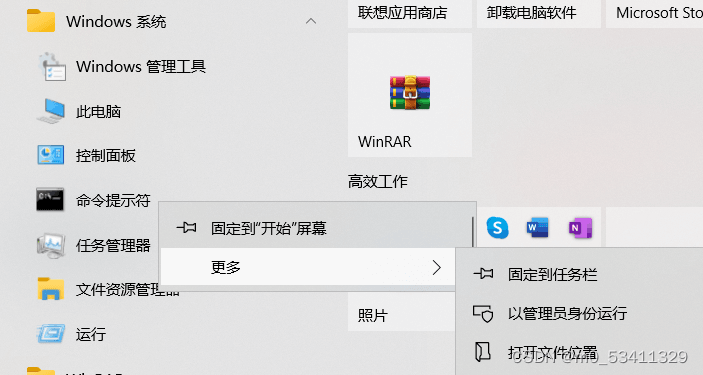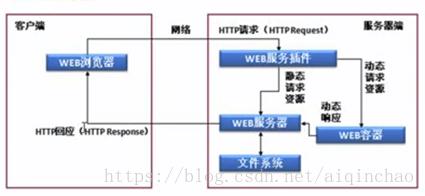目录
- 前言
- 1、Filter接口
- 2、FilterChain接口
- 执行流程
- 1、创建filterChain
- 2、执行dofilter
前言
Filter是什么?Filter是servlet规范中定义的java web组件, 在所有支持java web的容器中都可以使用 它是位于前端请求到servlet之间的一系列过滤器,也可以称之为中间件,它主要是对请求到达servlet之前做一些额外的动作:
- 1、权限控制
- 2、监控
- 3、日志管理
- 4、等等
这里涉及到两个接口:Filter和FilterChain
Filter和FilterChain密不可分, Filter可以实现依次调用正是因为有了FilterChain。
1、Filter接口
public interface Filter {
// 容器创建的时候调用, 即启动tomcat的时候调用
public void init(FilterConfig filterConfig) throws ServletException;
// 由FilterChain调用, 并且传入FilterChain本身, 最后回调FilterChain的doFilter()方法
public void doFilter(ServletRequest request, ServletResponse response,
FilterChain chain) throws IOException, ServletException;
// 容器销毁的时候调用, 即关闭tomcat的时候调用
public void destroy();
}
2、FilterChain接口
public interface FilterChain {
// 由Filter.doFilter()中的chain.doFilter调用
public void doFilter(ServletRequest request, ServletResponse response)
throws IOException, ServletException;
}
执行流程
在前面的文章中,我们知道,tomcat启动会执行StandardWrapperValve.java类的invoke方法:
public final void invoke(Request request, Response response){
……
MessageBytes requestPathMB = request.getRequestPathMB();
DispatcherType dispatcherType = DispatcherType.REQUEST;
if (request.getDispatcherType()==DispatcherType.ASYNC) dispatcherType = DispatcherType.ASYNC;
request.setAttribute(Globals.DISPATCHER_TYPE_ATTR,dispatcherType);
request.setAttribute(Globals.DISPATCHER_REQUEST_PATH_ATTR,
requestPathMB);
// Create the filter chain for this request
ApplicationFilterChain filterChain =
ApplicationFilterFactory.createFilterChain(request, wrapper, servlet);
// Call the filter chain for this request
// NOTE: This also calls the servlet\’s service() method
Container container = this.container;
try {
if ((servlet != null) && (filterChain != null)) {
// Swallow output if needed
if (context.getSwallowOutput()) {
try {
SystemLogHandler.startCapture();
if (request.isAsyncDispatching()) {
request.getAsyncContextInternal().doInternalDispatch();
} else {
filterChain.doFilter(request.getRequest(),
response.getResponse());
}
} finally {
String log = SystemLogHandler.stopCapture();
if (log != null && log.length() > 0) {
context.getLogger().info(log);
}
}
} else {
if (request.isAsyncDispatching()) {
request.getAsyncContextInternal().doInternalDispatch();
} else {
filterChain.doFilter
(request.getRequest(), response.getResponse());
}
}
}
} catch (ClientAbortException | CloseNowException e) {
}
……
}
上面的代码做了如下一些动作:
- 1、每次请求过来都会创建一个过滤器链(filterChain),并把待执行的servlet对象存放到过滤器链中。对于每个url,对应的filter个数都是不固定的,filterchain需要保存每个请求所对应的一个filter数组,以及调用到的filter的position,以便继续向下调用filter。
- 2、创建了filterChain之后,就开始执行doFilter进行请求的链式处理。
1、创建filterChain
下面我们具体来看看filterChain是怎么创建的
public static ApplicationFilterChain createFilterChain(ServletRequest request,
Wrapper wrapper, Servlet servlet) {
// If there is no servlet to execute, return null
if (servlet == null)
return null;
// Create and initialize a filter chain object
ApplicationFilterChain filterChain = null;
if (request instanceof Request) {
Request req = (Request) request;
if (Globals.IS_SECURITY_ENABLED) {
// Security: Do not recycle
filterChain = new ApplicationFilterChain();
} else {
filterChain = (ApplicationFilterChain) req.getFilterChain();
if (filterChain == null) {
filterChain = new ApplicationFilterChain();
req.setFilterChain(filterChain);
}
}
} else {
// Request dispatcher in use
filterChain = new ApplicationFilterChain();
}
filterChain.setServlet(servlet);
filterChain.setServletSupportsAsync(wrapper.isAsyncSupported());
// Acquire the filter mappings for this Context
StandardContext context = (StandardContext) wrapper.getParent();
FilterMap filterMaps[] = context.findFilterMaps();
// If there are no filter mappings, we are done
if ((filterMaps == null) || (filterMaps.length == 0))
return filterChain;
// Acquire the information we will need to match filter mappings
DispatcherType dispatcher =
(DispatcherType) request.getAttribute(Globals.DISPATCHER_TYPE_ATTR);
String requestPath = null;
Object attribute = request.getAttribute(Globals.DISPATCHER_REQUEST_PATH_ATTR);
if (attribute != null){
requestPath = attribute.toString();
}
String servletName = wrapper.getName();
// Add the relevant path-mapped filters to this filter chain
for (FilterMap filterMap : filterMaps) {
if (!matchDispatcher(filterMap, dispatcher)) {
continue;
}
if (!matchFiltersURL(filterMap, requestPath))
continue;
ApplicationFilterConfig filterConfig = (ApplicationFilterConfig)
context.findFilterConfig(filterMap.getFilterName());
if (filterConfig == null) {
// FIXME – log configuration problem
continue;
}
filterChain.addFilter(filterConfig);
}
// Add filters that match on servlet name second
for (FilterMap filterMap : filterMaps) {
if (!matchDispatcher(filterMap, dispatcher)) {
continue;
}
if (!matchFiltersServlet(filterMap, servletName))
continue;
ApplicationFilterConfig filterConfig = (ApplicationFilterConfig)
context.findFilterConfig(filterMap.getFilterName());
if (filterConfig == null) {
// FIXME – log configuration problem
continue;
}
filterChain.addFilter(filterConfig);
}
// Return the completed filter chain
return filterChain;
}
上面的代码做了一下几件事:
- 1、把要执行的servlet存放到过滤器链中。
- 2、如果没有配置过滤器则return一个空的过滤器链(只包含上面设置的servlet)。
- 3、如果配置url-pattern过滤器,则把匹配的过滤器加入到过滤器链中
- 4、如果配置servlet-name过滤器,则把匹配的过滤器加入到过滤器链中
注意: filterChain.addFilter()顺序与web.xml中定义的Filter顺序一致,所以过滤器的执行顺序是按定义的上下顺序决定的。
2、执行dofilter
创建了chain之后,就开始执行链式请求了,具体的逻辑如下:
private void internalDoFilter(ServletRequest request,
ServletResponse response)
throws IOException, ServletException {
// Call the next filter if there is one
if (pos < n) {
ApplicationFilterConfig filterConfig = filters[pos++];
try {
Filter filter = filterConfig.getFilter();
if (request.isAsyncSupported() && \”false\”.equalsIgnoreCase(
filterConfig.getFilterDef().getAsyncSupported())) {
request.setAttribute(Globals.ASYNC_SUPPORTED_ATTR, Boolean.FALSE);
}
if( Globals.IS_SECURITY_ENABLED ) {
final ServletRequest req = request;
final ServletResponse res = response;
Principal principal =
((HttpServletRequest) req).getUserPrincipal();
Object[] args = new Object[]{req, res, this};
SecurityUtil.doAsPrivilege (\”doFilter\”, filter, classType, args, principal);
} else {
filter.doFilter(request, response, this);
}
} catch (IOException | ServletException | RuntimeException e) {
throw e;
} catch (Throwable e) {
e = ExceptionUtils.unwrapInvocationTargetException(e);
ExceptionUtils.handleThrowable(e);
throw new ServletException(sm.getString(\”filterChain.filter\”), e);
}
return;
}
// We fell off the end of the chain — call the servlet instance
try {
if (ApplicationDispatcher.WRAP_SAME_OBJECT) {
lastServicedRequest.set(request);
lastServicedResponse.set(response);
}
if (request.isAsyncSupported() && !servletSupportsAsync) {
request.setAttribute(Globals.ASYNC_SUPPORTED_ATTR,
Boolean.FALSE);
}
// Use potentially wrapped request from this point
if ((request instanceof HttpServletRequest) &&
(response instanceof HttpServletResponse) &&
Globals.IS_SECURITY_ENABLED ) {
final ServletRequest req = request;
final ServletResponse res = response;
Principal principal =
((HttpServletRequest) req).getUserPrincipal();
Object[] args = new Object[]{req, res};
SecurityUtil.doAsPrivilege(\”service\”,
servlet,
classTypeUsedInService,
args,
principal);
} else {
servlet.service(request, response);
}
} catch (IOException | ServletException | RuntimeException e) {
throw e;
} catch (Throwable e) {
e = ExceptionUtils.unwrapInvocationTargetException(e);
ExceptionUtils.handleThrowable(e);
throw new ServletException(sm.getString(\”filterChain.servlet\”), e);
} finally {
if (ApplicationDispatcher.WRAP_SAME_OBJECT) {
lastServicedRequest.set(null);
lastServicedResponse.set(null);
}
}
}
上面的代码逻辑如下:
- 1、通过position索引判断是否执行完了所有的filter
- 2、如果没有,取出当前待执行的索引filter,调用其doFilter方法,在上面的接口说明中,我们看到,所有的filter类都继承了filter接口,都实现了dofilter方法;我们也注意到,该方法接收一个filterChain对象。在这段代码中,filter.doFilter(request, response, this);可以看到,将自身引用传递进去了,那么各个filter在dofilter的方法中,可以根据自身业务需要,来判断是否需要继续进行下面的filter链式执行,如果需要,就执行filterChain.doFilter方法,此时就又回到了此代码中。如果反复
- 3、如果执行完了所有的filter,则开始执行servlet业务模块servlet.service(request, response);
以上就是详解Tomcat中Filter是怎样执行的的详细内容,更多关于Tomcat Filter执行的资料请关注悠久资源其它相关文章!













